QuestionWe're in Michigan and my friend found a newly hatched brown anole at work, brought it home, it has a tank that is temp and humidity controlled environment. Been feeding it baby crickets which it seems to love. It's been almost 2 weeks, and this morning, he kind of twisted wierd and fell off his log. I thought we lost him, but he started acting normal, then he did it again. Is this something that's normal that they do? He had a cricket last night that was a little larger than the others, but he ate it. I didn't know if it could be indigestion, or a growth spurt? I just don't want to lose him if there's something we can do. HELP!!
AnswerHi Rob,
Its very, very important to never feed any insect to the anole that is larger than the space between their eyes. Lizards will eat (or try) anything put in front of them. As to the movement the anole made, since he is back to normal, I wouldn't worry unless he continues to do it. Its important that he does go to the bathroom. If he does not, then the too large of insect may have blocked him up a bit. The twisting could possibly be him trying to get the cricket down to his stomach.
I do want to warn you that many times, in taking a lizard from the wild, they do not survive, even with the best care due to the stress of captivity. Also, most wild caught lizards have a heavy load of internal parasites. I suggest having a fecal check done by a vet.
I am including a link to caring for a brown anole and also a short care sheet I wrote pertaining to a green anole, but the care is basically the same. I am including it so you can read more on the proper uvb sources.
http://www.lizardsarchive.com/care-sheets/brown-anole.php
TEMPERATURES:
They need a basking area temperature gradient of 85-93 degrees. These temperatures are needed to properly digest their foods. The basking area is one area of their cage. The overall or ambient temperature of their tank gradient upper 70-s to 80 degrees. 75 degrees for a cool area. Temperatures of 65-75 at night is fine. NEVER use heat rocks or heat caves for Anoles!! They malfunction and will cause death to the anole.
LIGHTING:
Anoles need UVB, which is the special lights that come in fluorescent tubes UVB is needed by the anoles to be able to absorb the calcium in the foods they eat. With out the uvb, they will develop metabolic bone disease. With the tubes, they must say that they produce BOTH uvb and
uva. The uvb needs to be 5% or higher. Repti Sun 5.0 are one of the best uvb tubes on the market.The "Iguana light" is the same tube, just different packaging. There is also a reptil sun 10.0 tube that is very very good. The repti glo 8.0's are testing out to be a great uvb source also. The 5.0 and 8.0 need to be positioned 6-8 inches over the anole so that they get the uvb that is needed. The 10.0 can be 8-10 inches above the Anoles level. The tubes need to be replaced every 6-9 months as that they stop producing uvb long before they stop producing light.
There are tubes that say ''full spectrum'' but they do not produce any uvb.
Do not use the coil lights as that they don't put the uvb in the correct direction for the anole.
For daytime heat, if using the tube uvb, regular household incandescent lightbulbs produce heat. The wattage will depend on the size of your anoles enclosure. At night you need to provide a heat source in the form of a ceramic heat emitter(which can also be used during the day) or a
special nighttime bulb(red or deep purple) that does not
produce any bright white light if the temperatures drop below the recommended night temperatures.
DIET:
Anoles eat daily. They are insectivores. Their food must not be too big for them (no larger than 1/2 the size of their head. All insects that are fed to them must be properly gut loaded for at least 48 hours before feeding them. Crickets, silk worms,trevo worms, wax worms are all part of their varied diet. Many will even eat babyfood fruits and possibly the meats. They are used as treats(once or twice a wk) and are wonderful for hydration. The Gut loading is feeding the insects a nutritious diet prior to feeding the insects to the anoles. This can be accomplished with feeding a recommended "diet" for the insect. ( http://www.anapsid.org/feedingbugs.html ) The crickets can be fed vegetables and cereals. Chicken laying mash is a good choice of food for the crickets as are other commercial foods designed for crickets.Their food needs to be dusted with calcium powder (rep cal calcium with no added phosphorus or vitamin D3 is a good brand) two times a week. Some may eat a bit
e or two of fruit. A vitamin should be used once a week. Rep Cal Herptivit is a good brand. Be sure to remove any crickets your anole has not eaten after 20 minutes or so to prevent the crickets from nibbling on your anole. Keeping your crickets well fed will help prevent this.
HOUSING:
A 20 gallon tall or larger tank or mesh vivarium is recommended for an Anole. As with almost all reptiles, its best to house them separately. Males can NEVER be housed together as they will fight over territory. Females MAY get along, but doesn't always happen.
Provide several basking branches and plants (silk and plastic)for your Anole. Be sure that all plants and branches are well anchored. For substrate(flooring) the best is plain unprinted newspaper or paper towels... its cheap and easy to clean..and the best part is its safe. Paper towels and lizard carpeting may also be used. Some of the soil mixes are ok to use also.
Stress is the usual cause of an anole turning brown. Stress with them can be caused by incorrect temperatures, other animals that they see, incorrect or no uvb, housing problems (not "natural" enough for them with plenty of plants, etc) housing two males together, (or just two that do not get along)tank not large enough ( for two anoles(male and female or possibly two females)
WATER:
Their water consumption is from dripping leaves. Misting the tank is important. Humidity needs to be in the 60-70 % range. Be sure to provide a small dish of fresh drinking water daily.
This is by no means a complete caresheet on anoles. Please be sure to check out the following link for more in-depth anole care.
http://www.kingsnake.com/anolecare/5.htm
Also, its a good idea to find a Vet before one is actually needed. Reptiles need vets that are trained to treat them. You can find a vet in your area by going to
http://www.anapsid.org/vets/
http://www.arav.org/Directory.htm

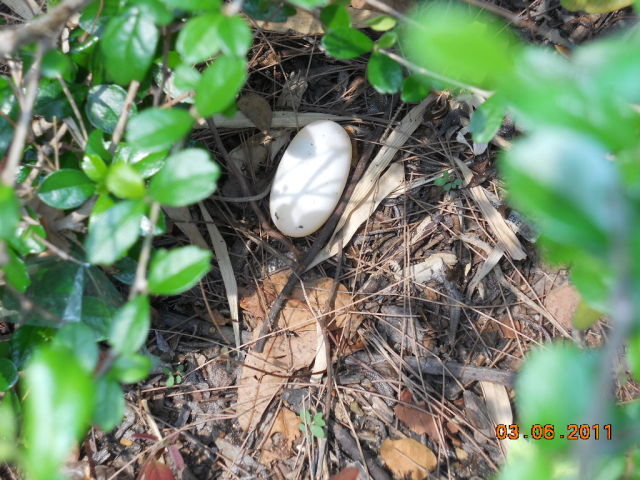 Snake egg identification
Question
Snake Egg
This egg was found in the American E
Snake egg identification
Question
Snake Egg
This egg was found in the American E
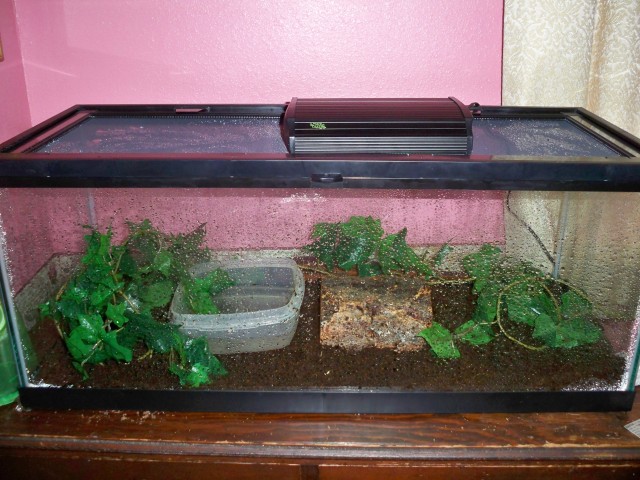 Humidity level
QuestionQUESTION: I just purchased a water dragon and I
Humidity level
QuestionQUESTION: I just purchased a water dragon and I
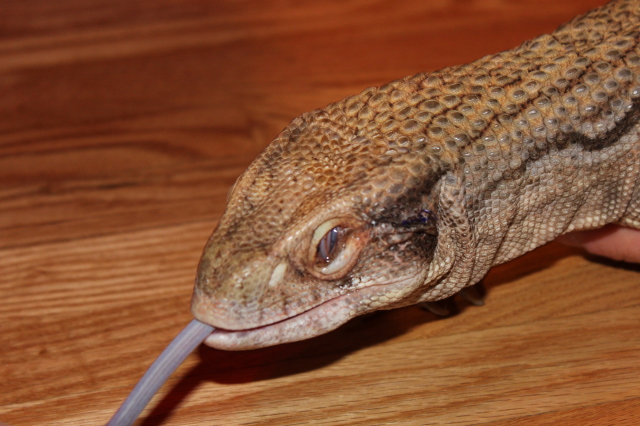 Savannah Monitor eye issue
Question
Savs Eye Savs Eye
Savannah Monito
Savannah Monitor eye issue
Question
Savs Eye Savs Eye
Savannah Monito
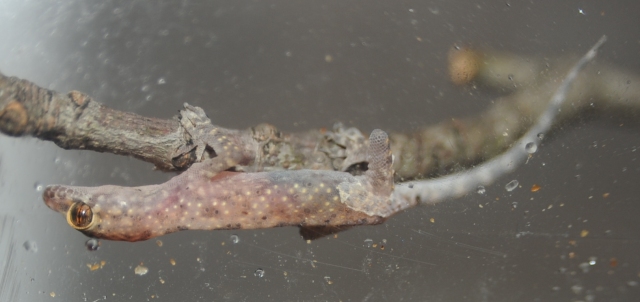 Anole or Gecko ID (found in car after trip to AZ/TX
Question
Hitchhiker named JR
Hi Bryan,
About a month
Anole or Gecko ID (found in car after trip to AZ/TX
Question
Hitchhiker named JR
Hi Bryan,
About a month
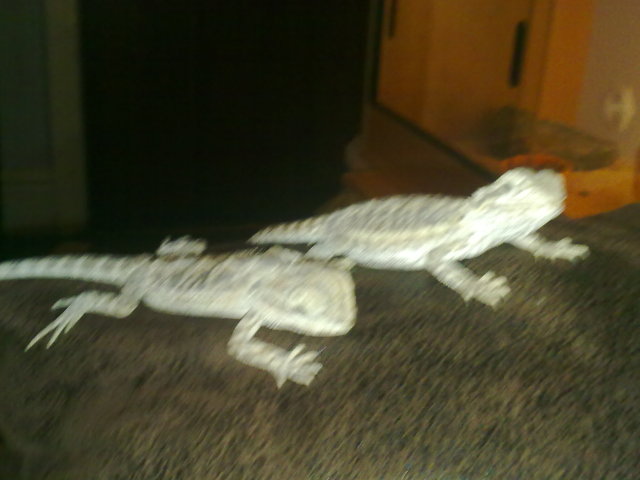 Bearded Dragon size
Question
Eddie Lizard & Lizzie
My son got 2 Bearde
Bearded Dragon size
Question
Eddie Lizard & Lizzie
My son got 2 Bearde